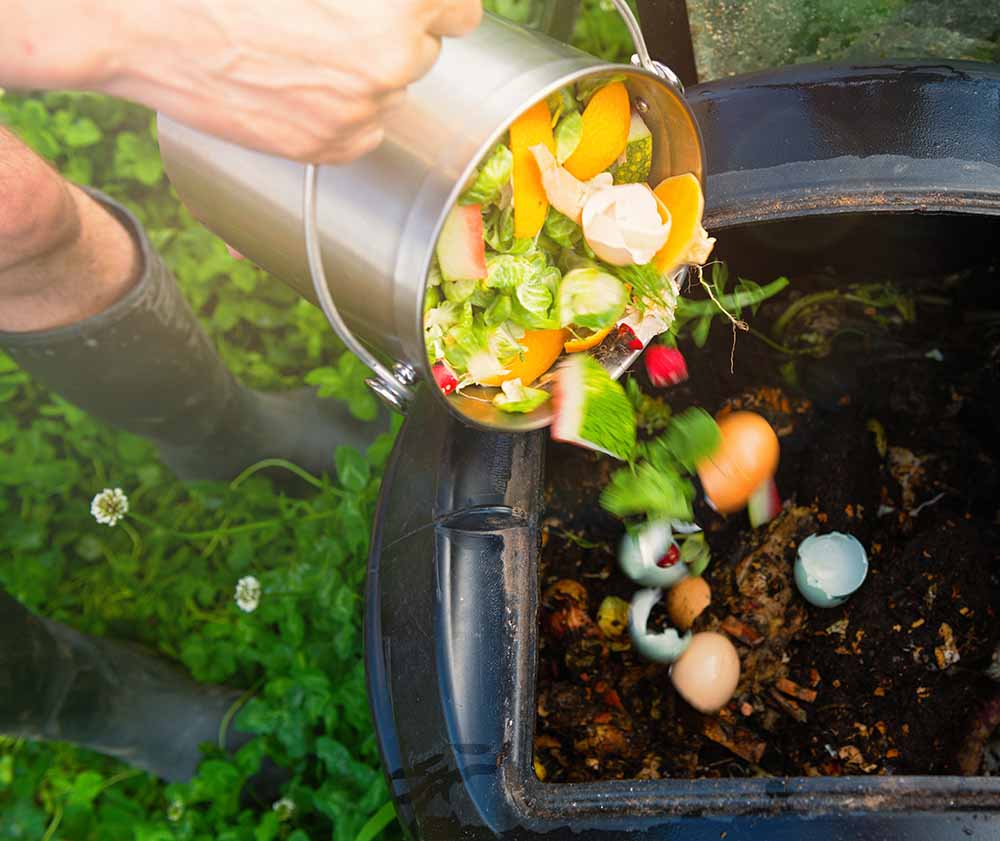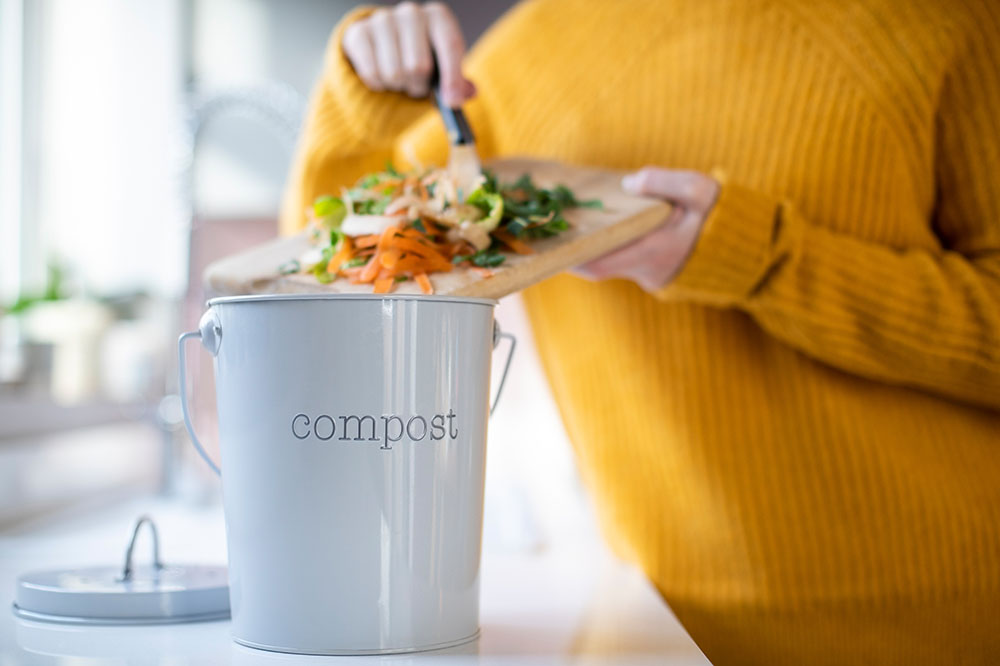Up for a change in your lifestyle to be more sustainable and help stave off climate change in any way you can? Composting at home is a unique and creative way you can do your bit. The United Nations Environment Programme (UNEP) reveals that almost 570 million tonnes of food loss and waste are generated at home. This means taking action at home is critical. So, the UNEP and the Institute for Global Environmental Strategies (IGES) suggest composting as a key method of managing organic waste while also reducing environmental impacts.
How does composting help the planet? Here are some ways:
• It can reduce the dependence on chemical fertilisers.
• It can help recover soil fertility and water retention.
• It can help plants grown in the same soil retain more nutrition.
• It keeps organic waste away from landfills.
• It reduces greenhouse gas emissions.
With so many benefits at stake, it is critical that everyone start composting at home. The best bit is, composting at home is very easy. Moreover, you can do it with a little preparation whether or not you have a garden at home.

The Basics Of Composting
Before you start with your composting at home, here are a few basics you must know. The United States Environmental Protection Agency (EPA) reveals that composting requires three basic, organic materials:
• Browns, which include dead leaves, branches and twigs. These brown materials provide carbon for the compost.
• Greens, which include grass clippings, vegetable wastes, fruit scraps and coffee grounds. These green materials provide nitrogen for the compost to develop.
• Water, which helps the browns and greens develop into compost by adding moisture that helps break down the organic matter.
Because all three of these materials are important in the development of the compost, you must always add equal amounts of browns and greens, and make alternate layers with differently sized particles.

Things You Can Compost
All organic materials in and around your home can be composted. This includes fruits and veggies, eggshells, coffee grounds and filters, tea bags, nut shells, shredded newspaper, cardboard, paper, grass trimmings, houseplants, hay and straw, leaves, sawdust, wood chips, cotton and wool rags, hair and fur, and fireplace ashes.
Things You Should Never Compost
While everything organic can go in a compost, there are some organic things that can do more harm to the environment than good. Being mindful of what goes into the compost is therefore very important. Here are a few things you should never compost:
• Black walnut tree leaves or twigs, because they release harmful substances that can affect plants.
• Coal and charcoal ash, because they might contain substances that harm plants.
• Dairy products and eggs, which can lead to foul odours, attract pests and flies.
• Diseased plants, because these can infect the soil and other plants.
• Fats and oils, which can create bad odours and can attract rodents and flies.
• Meat or fish bones, which can create foul odours and attract pests.
• Pet wastes, because these can contain parasites, bacteria, germs, pathogens and viruses.
You should also check with local recycling authorities for other guidelines which may apply to your specific region.

Composting In Your Garden Or Yard
To make compost at home, you need a few tools like pitchforks, square-point shovels, and water hoses. Here are the steps you need to follow to make a compost in your garden or yard:
• Select a dry, shady spot near a water source in your garden or yard. (You don’t need to dig a hole, as most people tend to make a pile of compost now.)
• Add brown and green materials in layers, while ensuring that larger pieces of waste are chopped or shredded.
• Keep adding moisture to the dry materials regularly.
• Once the compost pile is established, mix green waste in the pile, while burying fruit and vegetable waste under 10 inches of compost material for quick degeneration.
• Regularly mix or turn the compost, and adding some water, will help maintain the compost.
• You can cover the top of the compost with a tarp to keep it moist.
• When the material at the bottom of the pile is dark and rich in colour, your compost is ready. This process can take anywhere between two months and two years depending on your local atmosphere.

Composting Indoors
Believe it or not, composting indoors in your living space is a real thing, and people around the world are now increasingly adopting it. The first thing you need to do is locate a dark, cold space—which can be an under-the-sink cabinet, closet or the basement. There are basically two methods of composting indoors:
• Aerobic composting, uses microbes from garden soil to convert kitchen waste into compost. If you’re using this method, add garden soil to your compost bin regularly. This method is well-suited for most Indian homes.
• Vermicomposting, uses worms and soil microbes to convert organic waste into compost. If you’re using this method, add red earthworms to the compost bin. Because of the weather and high moisture levels in most parts of India, this method might not be the best for Indian homes.
It’s important to remember while composting indoors that oxygen is a key component of an effective compost. So, selecting the best compost bin is essential. Ideally, your compost bin should be a lidded plastic or metal container or a wooden crate. It should be large enough to fit weeks of organic wastes, so an 18-gallon container may be a good fit. Make sure there are some holes around the top of the compost bin to allow the entry of oxygen. Place the bin on a wide plastic or rubber tray to ensure that any liquid that drains out doesn’t spread away from the compost area. Ensure you dump out the excess water from time to time.
Foul odours can get very easily accentuated indoors, but it’s important to remember that composting shouldn’t be very smelly. This is the reason why if you do have any foul odours coming from your indoor compost, it could be because of any of the following reasons:
• Too much moisture in the bin, which can be resolved by adding more browns than greens.
• Too much food waste in the bin, which can be resolved by adding lesser food waste next time.
• Too little oxygen, which can be resolved by adding more holes to the bin, turning the compost with a fork, and placing a few bricks between the bin and the tray underneath (which will allow more airflow).
A few tips that will come in handy while indoor composting:
• Chop or tear all kitchen scraps before composting.
• Keep the compost bin covered.
• The moisture level in your compost should be equal to that of a wrung-out sponge, so don’t add any water to it if you have plenty of food waste.
• Keep a bag of shredded or waste paper, or dead leaves, close to the compost bin so that you can refill the bin quickly if it becomes too moist.
• If you’re vermicomposting, make sure the earthworms don’t escape the bin. If they do, the waste you’ve added to the bin is inedible for them, and this means the waste will rot rather than decompose.